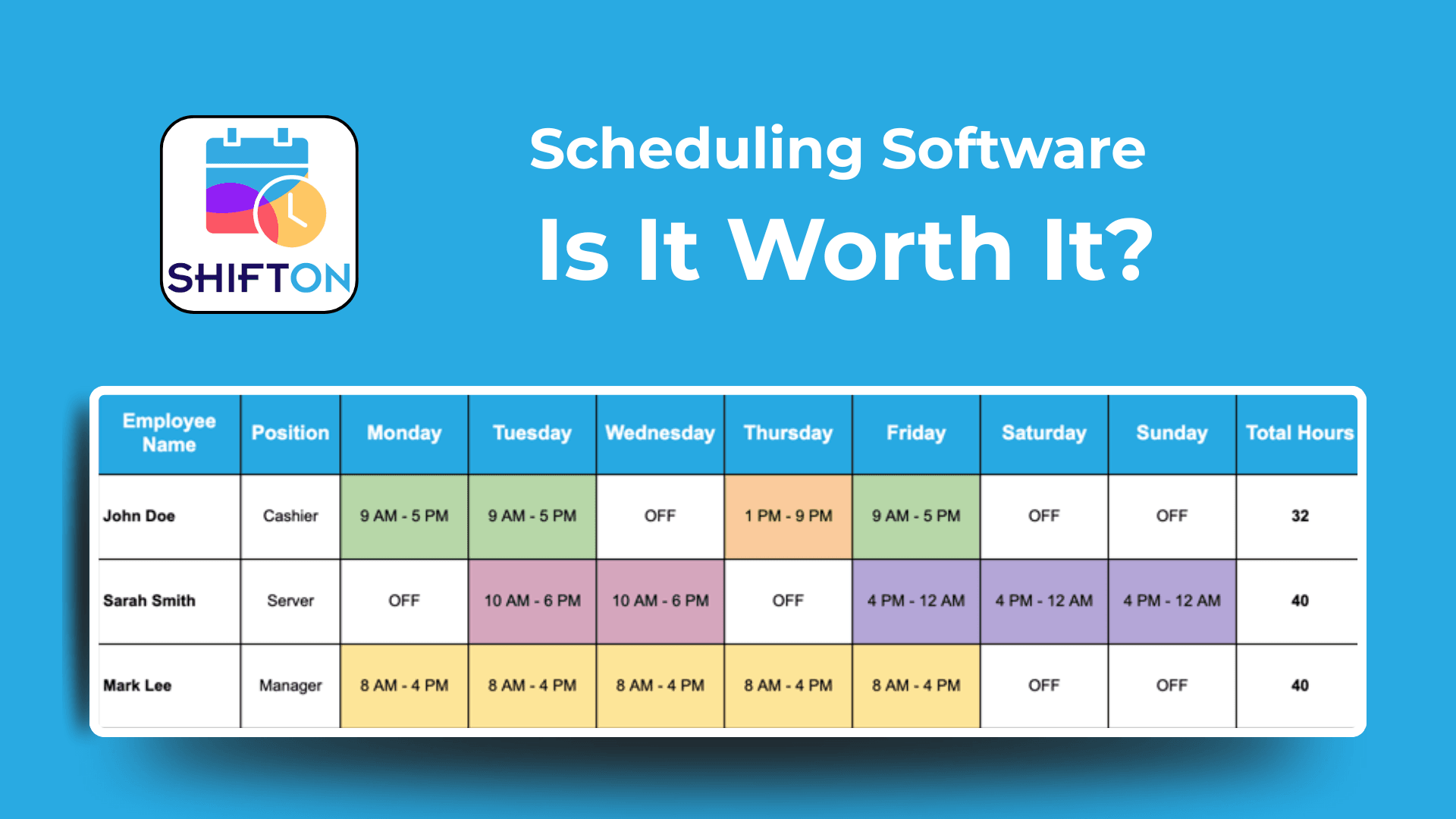Simple scheduling solutions, including Microsoft Word and Excel, hardly keep the workflow steady. As many industries, including restaurant, health, retail, and outsourcing, moved into the digital age, hundreds of scheduling software products appeared which significantly simplified the process of timetable generation.
Before we delve into the possibilities of modern scheduling software, it is vital to get acquainted with types of work timetables.
What type of timetables can be created in an employee schedule maker
Of course, most modern companies use a fixed work schedule type due to its simplicity: the same number of hours and days every week - for example, when a company operates Monday to Friday from 9 AM to 6 PM. It is used by pharmacies, small shops, customer services, government organisations. In some cases, employees can work overtime and receive additional pay.
Flexible
On paper, this seems an ideal way of workforce organisation: employees and employers agree on the number of hours and days which have to be met on a weekly basis. They can work 20–30 hours a week whenever they please or during a specific time of the day. Things become complicated when most employees want a flexible schedule. If this was not hard enough to manage, there are a few flexible schedule subtypes:
Compressed workweek. This variation of a flexible schedule takes a 40-hour week and squeezes it into a few days. For example, an employee can have three 12-hour or four 10-hour workdays but get an additional day-off or two.
Flex. If employees choose this option, they can pick the time when their shift ends and starts, but will have to work the same number of hours every day,
Result Oriented Work Environment. It does not require any working hours to count the salary, but instead, payments are based on the amount of work done: deadlines met and assignments completed.
Split shift. This type of flexible timetable allows dividing the shift between different hours of the day. A worker can do 3 hours in the morning, 4 hours in the evening.
- Rotating
The less commonly used, but nevertheless alive and kicking schedule type is the rotating timetable. If a business adopts a rotating schedule, it will be able to operate 24/7 by breaking the cycle of production into three shifts: day, swing and night. This type of employee scheduling is mostly found in construction work, hospitals, power plants, and road work.
Employee shifts change weekly or quarterly, depending on work requirements. For example, those who are employed on construction jobs may work the night shift for one week and switch to a day shift the next. Employees can find these hard to handle, as their sleeping and eating patterns have to constantly change.
Why switch to an employee schedule maker
These timetable types can seem a bit difficult to handle, but luckily there is an abundance of employee schedule generators. They offer various features that make scheduling effortless for various types of businesses, no matter what they choose for all of their workers or for a group of them.
This is made possible thanks to the various settings this software has to offer:
- Schedule generation Users are able to generate schedules, no matter what type they choose to work with. Most online scheduling software offers to create any number of shift templates and schedules.
- Shift managing If there are changes in shift duration, they can be edited on the go. For example, if an employee wants to work more hours but fewer days, some of their shifts can be deleted, while others are extended or shortened for a chosen period. Shifts that are not assigned to any employees can be deleted or taken by other workers.
- Shift swapping Should any unexpected circumstances occur, employees can easily swap shifts with one another to avoid unnecessary time-wasting on exchanging shifts using third-party software and keeping the workflow in check. There can be a number of instances when this feature will prove handy. With that said, the management does have to confirm these requests to maintain some control over workforce organisation.
- Time-off requests Last but not least, most modern employee scheduling solutions offer a way for employees to request time off. Maybe they are too tired, need a holiday, or will not be clocking in tomorrow due to illness. This can be done without using any third-party service. In some cases, users are able to attach documents to confirm that their absence is based on solid evidence.
There is an abundance of similar software products currently available on the market. They offer most various aforementioned features and some of their own. With that said, we can recommend the Shifton scheduling service highly enough. It provides company owners with a fast way of creating and deploying work schedules for any number of employees with various features under its belt and a flexible schedule generation system.
The Shifton service is one of the employee scheduling software products currently available on the market.




